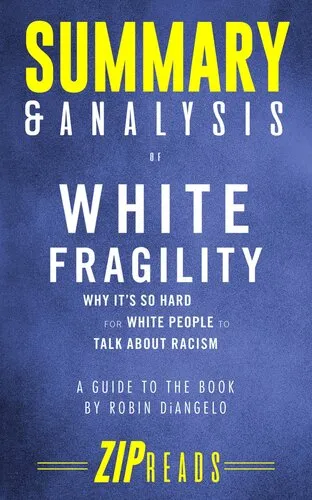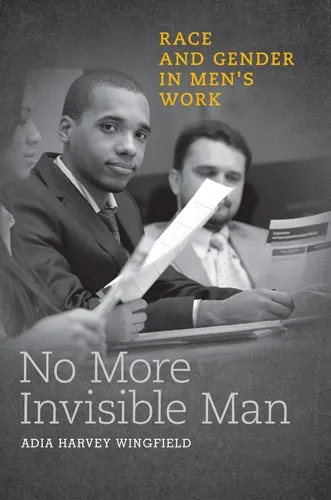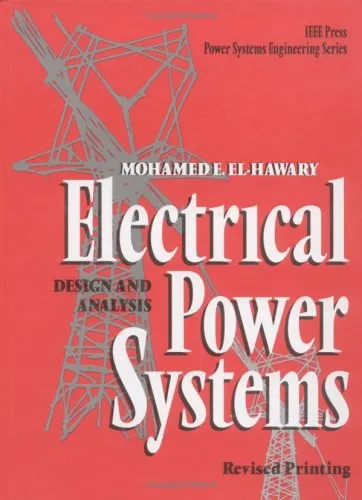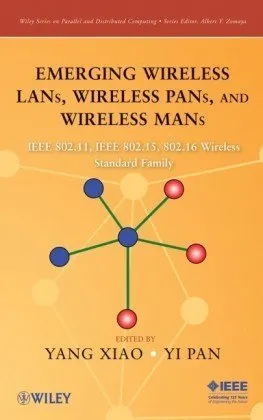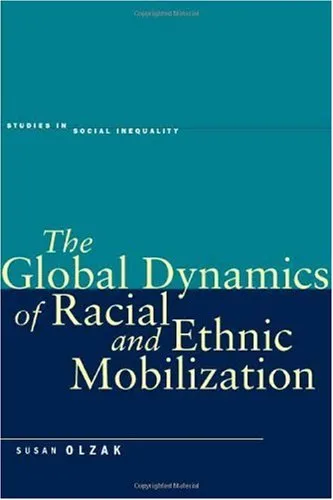Summary & Analysis of White Fragility: Why It's So Hard for White People to Talk About Racism | A Guide to the Book by Robin DiAngelo
4.3
Reviews from our users

You Can Ask your questions from this book's AI after Login
Each download or ask from book AI costs 2 points. To earn more free points, please visit the Points Guide Page and complete some valuable actions.Related Refrences:
Introduction to the Book
The societal conversation about race in America has been ongoing for centuries, and yet, as Robin DiAngelo points out in her seminal work, "White Fragility: Why It's So Hard for White People to Talk About Racism," there are still significant barriers to achieving genuine understanding and progress. In our guide, "Summary & Analysis of White Fragility: Why It's So Hard for White People to Talk About Racism," we aim to distill DiAngelo's insightful perspectives and provide a comprehensive overview of the key themes and insights she explores.
This book is both illuminating and challenging, encouraging readers to scrutinize their own assumptions and behaviors around race. "White Fragility" probes into the oft-uncomfortable territory of the defensive reactions many white people have when their objective view of society is called into question. DiAngelo introduces and dissects the concept of "white fragility," a phenomenon she defines as a range of defensive moves white people make when confronted with the topic of racial inequalities.
At the heart of the book is the assertion that the systemic racism prevalent in American society is upheld by behaviors and mindsets that are often unconscious. DiAngelo, a seasoned educator and speaker on issues of race, draws from her own experiences to illustrate how white fragility is entrenched in power dynamics and serves to maintain racial hierarchies. Through our guide, readers will gain an understanding of her argument that acknowledging and overcoming white fragility is crucial for fostering meaningful dialogue and change.
Our goal is to provide readers with a clear, concise summary and analysis of "White Fragility" to enhance their comprehension of this pivotal work. By breaking down complex ideas and presenting a straightforward guide to DiAngelo’s message, we hope to engage a wider audience in the critical discourse necessary for dismantling racial prejudice.
Detailed Summary of the Book
In "White Fragility," DiAngelo begins by examining the defensive reactions white people often have to discussions about race and racism. She argues that these reactions serve to protect a deeply ingrained system of white supremacy. The book elaborates on how this fragility is a consequence of living in a society that insulates white people from racial discomfort.
DiAngelo discusses various concepts such as socialization, systemic racism, and the necessary skills for fostering productive cross-racial dialogues. The book challenges readers to go beyond the simplistic notion of racism as overtly malicious actions and instead view it as subtle, systemic, and pervasive. Through detailed anecdotes and analysis, DiAngelo illustrates how even well-meaning white people can unknowingly participate in racist structures.
Key Takeaways
-
White fragility is a protective mechanism that prevents productive racial dialogue and maintains systemic racism.
-
Understanding racism requires recognizing it as a complex system rather than isolated acts of prejudice.
-
Engaging in meaningful dialogue about race necessitates uncomfortable self-examination and a willingness to change.
Famous Quotes from the Book
“The most effective adaptation over time is to make the system appear to be legitimate and neutral, even while it is dedicated to its original inequitable goals.”
“
Free Direct Download
You Can Download this book after Login
Accessing books through legal platforms and public libraries not only supports the rights of authors and publishers but also contributes to the sustainability of reading culture. Before downloading, please take a moment to consider these options.
Find this book on other platforms:
WorldCat helps you find books in libraries worldwide.
See ratings, reviews, and discussions on Goodreads.
Find and buy rare or used books on AbeBooks.
